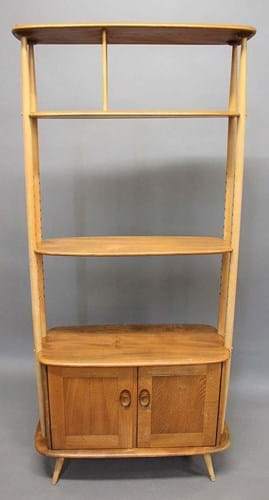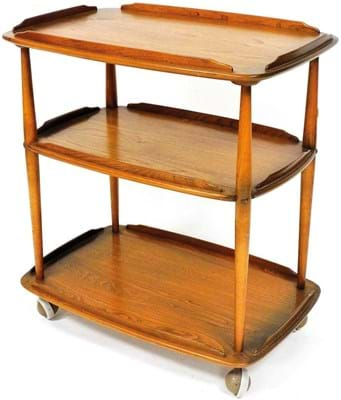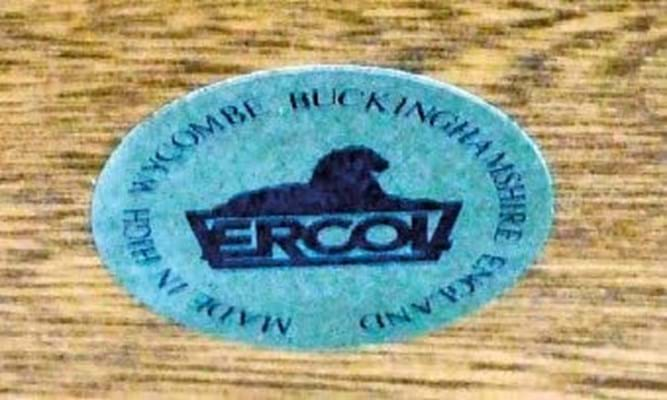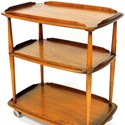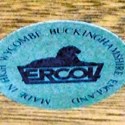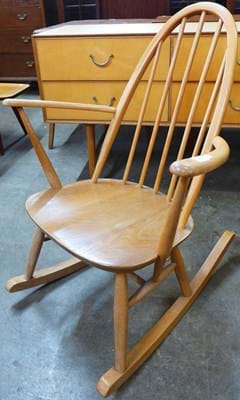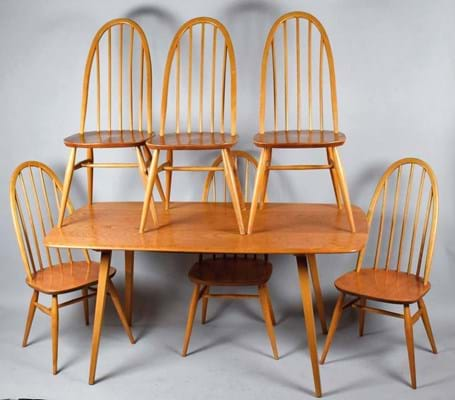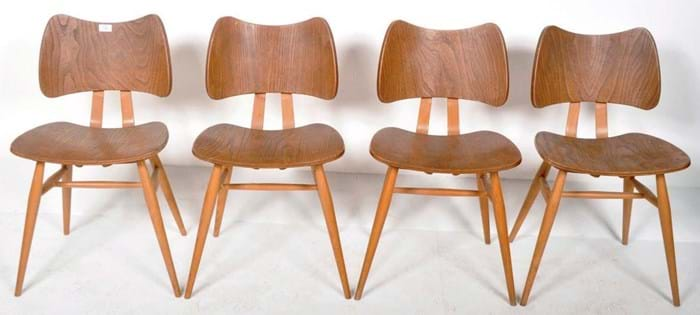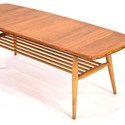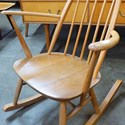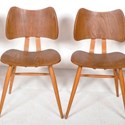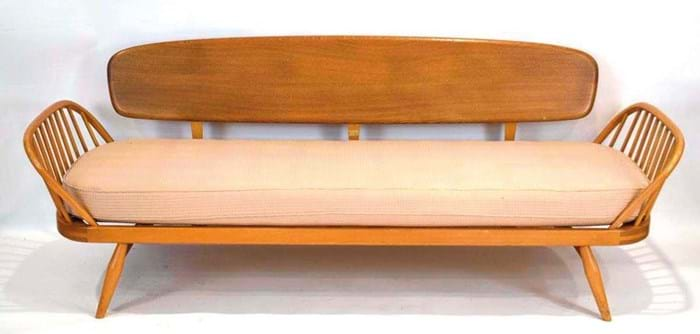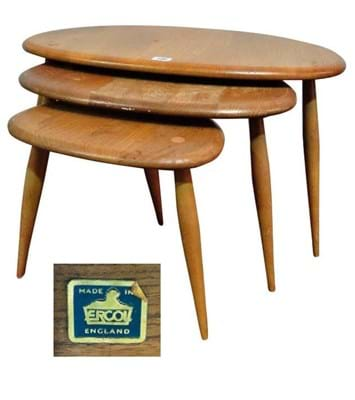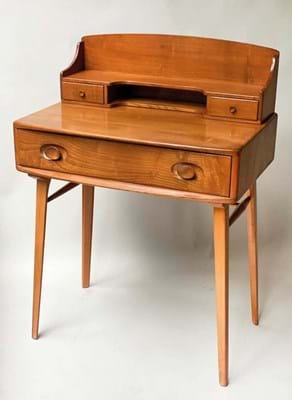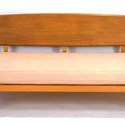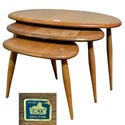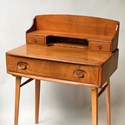It was the Second World War and an order to supply 100,000 Windsorstyle kitchen chairs for the National Utility Scheme that transformed the Ercol furniture company.
To meet the Board of Trade’s demands, production methods at a sleepy High Wycombe factory were transformed, while for the first time Anglo-Italian proprietor Lucian Ercolani (1888- 1976) embraced the possibilities of ‘modern’ design.
Ercol’s post-war Windsor collection, first exhibited in 1946 at the Britain Can Make It exhibition at the Victoria and Albert Museum, gave some of the Thames Valley’s most traditional forms a new twist.
Some time-honoured elements remained. While other firms were experimenting with composites and laminates, Ercolani kept faith with the ‘honesty’ of solid timber and the dovetail joint. But his was English vernacular kitchen and dining room furniture re-imagined for the atomic age. A line was drawn between the ornate and bulkier designs of the pre-war era and the clean lines and smaller forms of the 1950s.
At a time when the British consumer wanted a washing machine in the kitchen and a television in the lounge, Ercol’s affordable, massproduced elm and beech furniture found a ready market.
Elements of the Windsor collection are today recognised as classics of British design.
Elegant models such as the Loveseat (1956), Studio Couch (1956), the Butterfly Chair (1958) and the Giraffe Room Divider (1957), typically finished in little more than clear lacquer and wax, helped forge Ercol’s reputation for ‘unfussy’ and robust furniture made to modern aesthetics.
It is a reputation that has seldom faded but one that chimes perfectly with the current vogue for midcentury style.
First wave
Of most interest to collectors are the first flush of Windsor range pieces. Those produced from 1953-76 will typically carry a small rectangular blue and gilt label and have begun to acquire the patina of age.
Colour is also key. When it comes to the Ercol market, blonde is certainly more fun.
While Ercol made many of the same designs in a dark brown ‘oak’ finish (the Old Colonial range), these usually sell for significantly less today. Roughly half is the norm.
But whether blonde or brunette, prices are still accessible. It is no longer a surprise to see some of the most desirable pieces of Ercol bring a four-figure sum at auction but price levels in the secondary market for vintage pieces are still yet to match those of newly made Ercol furniture. When relaunched in 2003 as the Ercol Originals series, reproductions of some of the 1950s designs came with price tags that might well have caused Ercolani to raise an eyebrow were he still around.
A modern nest of Pebble tables at £825, a Studio Couch at £3700 and dining chairs priced from £445 upwards aren’t perhaps the ‘affordable quality’ he envisaged while a student at the Shoreditch Design School.


